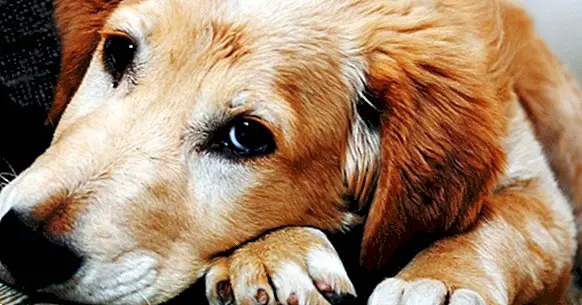Is there suicide in animals?
Suicide is one of the most common causes of unnatural death and traumatic, claiming a large number of victims each year. It is a type of self-destructive behavior that has preoccupied the human being since ancient times, generating a deep investigation in this regard from areas such as psychology or medicine, looking for the causes and ways to prevent the human being from actively seeking their own death. But this type of behavior has not been seen only in humans.
Numerous cases of animals have been documented that have caused their own death in some way. Are these deaths a product of the will to die? Is there suicide in animals? In this article we are going to make a brief reflection about it.
- Related article: "Comparative Psychology: the animal part of psychology"
Cause one's own death
Suicide is understood as the performance of a behavior or series of behaviors that they aim to provoke one's own death . Generally, those who carry it out have the intention of avoiding suffering in a situation where they do not have enough resources to manage, although the reasons why someone decides to take their own lives can be multiple.
The suicide is an action that supposes the will of the own being to propitiate the end of its existence, having active intention of which the conduct emitted leads to the death. It is necessary to take into account the concept of death, to know that we can die and that we have the capacity to self-generate it. Thus supposes a certain level of abstraction, and also of planning . It also supposes the existence of a self that wants to die, that is, of some kind of self-consciousness of oneself as a being.
These aspects have often made experts doubt the possibility that there is or is not suicide in the animal world, as there is no evidence that they possess all these capabilities. It has been observed that multiple species react to the death of their peers with anguish and regret, but it is unknown if they are aware of their own mortality and that their behavior can lead to it.
Are there cases of suicide in animals?
There are numerous cases of animal suicides throughout history, or at least of phenomena that have been identified as such. Since ancient times, we can see how different writings document the death of dogs by starvation after the death of their owners (something that still happens today).
In more recent times, in 1845 a case was published in the Illustrated London News in which a dog, which had shown signs of previously decayed behavior, had thrown himself into the water of a park without intending to swim, leaving his legs still with the supposed end of sinking. The dog was rescued, but after that he tried again. After several attempts finally the dog sank and died. The same type of behavior has been observed in other animals, such as ducks or penguins that have lost their partners or dolphins they have stopped breathing (in these beings breathing is not semi-conscious as it is in us, but conscious and voluntary).
Another typical example is the lemmings , of which a supposed mass suicide has been documented when there is overpopulation. However, the truth is that such mass suicide is not such but it is something that could happen accidentally when these animals try to migrate massively to areas with food availability and encounter different geographical accidents. They would be trying to find food, moving forward with that purpose and not with the idea of killing themselves. In fact, it is speculated that in reality the image that we all have of these rodents tumbling down a precipice was a montage, its reliability not being clear.
Finally, the death of whales stranded on the shore of the beach is also considered by many as suicide, although it may be due to diseases.
Self-generated deaths
Regardless of what we consider suicide or what values that animals can get to practice or not, the truth is that there is evidence that multiple living beings have practiced different actions that have led to their own death.
The clearest and most known example is the case of many pets that, after the death of their owner, they stop eating until they die of starvation . This type of behavior has been observed since antiquity, there are stories about this reaction in animals.
The same happens sometimes with some animals in freedom, which act in this way because of the death of their partner. The pain before the death of a loved one can generate serious psychological damage also in animals, being documented the presence of anxious and depressive symptomatology in different species. As a result of this fact, they lose their appetite. In the case of pets closely linked to their owner , cases have been reported in which they have remained next to his grave until his own death.
Another behavior of this type is found in animals in captivity and / or in a situation of high stress. Specifically, many animals commit different self-injurious acts that can end up causing severe damage or even death. An example is found in the blows that different cetaceans give against the margins of its enclosure.
Another type of self-generated death in animals is that which is used in order to protect another being, usually the offspring of the creature. For example, the parent can serve as a distraction for their young to flee or attack the aggressor to defend them even if it could cause death. However in this case it is not a suicide in the strict sense since the objective is not to die, but to protect the other even at the cost of one's own life.
You can also find animals that generate their own death through biological defense mechanisms . For example, there are some types of ants that in the presence of enemies tense and generate the rupture of certain glands that end up causing the explosion of your body. This type of suicide ends with the death of the enemy or predator, but also of the subject itself.
Finally, some parasites and fungi are known for generate suicidal behaviors in different animals . This is what happens with ants in front of different fungi of the genus Cordyceps, which end up looking for the stem of a leaf to bite it and wait for death while the fungus develops. In this case we would be talking about an induced suicide, in which the animal does not really plan or want to die. Other bacteria generate behaviors that can lead to suicidal behaviors such as approaching or losing fear of predators.
- Maybe you're interested: "Can love exist between species?" Research supports "yes" "
Arguments of those who defend their existence
Practically until a few centuries ago, a large part of the population considered that only the human being was conscious of himself, capable of abstract thought and reflection. Therefore, under this type of thinking we would be facing the only animal species that would be capable of provoking death voluntarily and consciously.
However, research has shown that this is not the case. Monkeys, dolphins, crows, parrots, rats and other species have manifested in different experiments possess capabilities that go beyond mere instinct.
There are multiple species that have manifested the ability to identify themselves , as happens with primates and dolphins, and that manifest the ability to become depressed and feel anxiety (something visible in pets and animals in captivity, but also in animals in freedom). They have also shown signs of intelligence and ability to sequence actions, as well as communicate (there are even cases of animals that have learned sign language) and establish plans.
It has also been seen that many animals can achieve the understanding that their actions may or may not have an effect on the situations they live. A well-known example was given in the experiments that originated the theory of learned helplessness, made with dogs that in the presence of electric shocks from which they could not originally flee stopped looking to avoid them even when in another situation they only had to move to another side of the cage.
However, it is unknown if they have the same capacities in imagination, future projection and level of abstraction as the human being, or a sufficient level that would allow them to become capable of procuring their own demise.
- Related article: "Suicidal thoughts: causes, symptoms and therapy"
Arguments of those who deny their existence
Those who consider that animals do not have the capacity to commit suicide consider that the behaviors associated with autolysis are in fact involuntary, in reality there is no intention to take their own life.
The aforementioned self-harm, for example, could be explained as self-harm aimed at changing states of anxiety or stress, or seeking freedom from some type of suffering (which, on the other hand, resembles the main reasons that usually lead to suicide). Death by starvation may be caused by grief, but this does not imply that there is a will to die. In this case, it is proposed that Experienced suffering and grief occupy the mind of the animal , making him forget to eat. Suicide as a defense mechanism would be an instinctive and emotional reaction that would not really seek death but the defense of colony or offspring.
Finally, the case of infestation by parasites or fungi is not related to a death wish but to a death caused by external factors, which would not be considered suicide.
A realistic conclusion
Many of the cases that have been documented of animals that have caused their own death have a series of characteristics that may make one doubt the validity of considering such action a suicide or not.
It is undeniable that some animals actively provoke their own death, but it is much more complicated to determine If your actions are really motivated by the desire to die . In this sense, science has not yet been able to determine this fact in a reliable manner, and there are still insufficient data to affirm or deny that animals have the capacity to commit suicide with full awareness that they are doing so.
Bibliographic references:
- Preti, A. (2007). Suicide among animals: a review of evidence. Psychological Reports, 101 (3): 831-848.



















